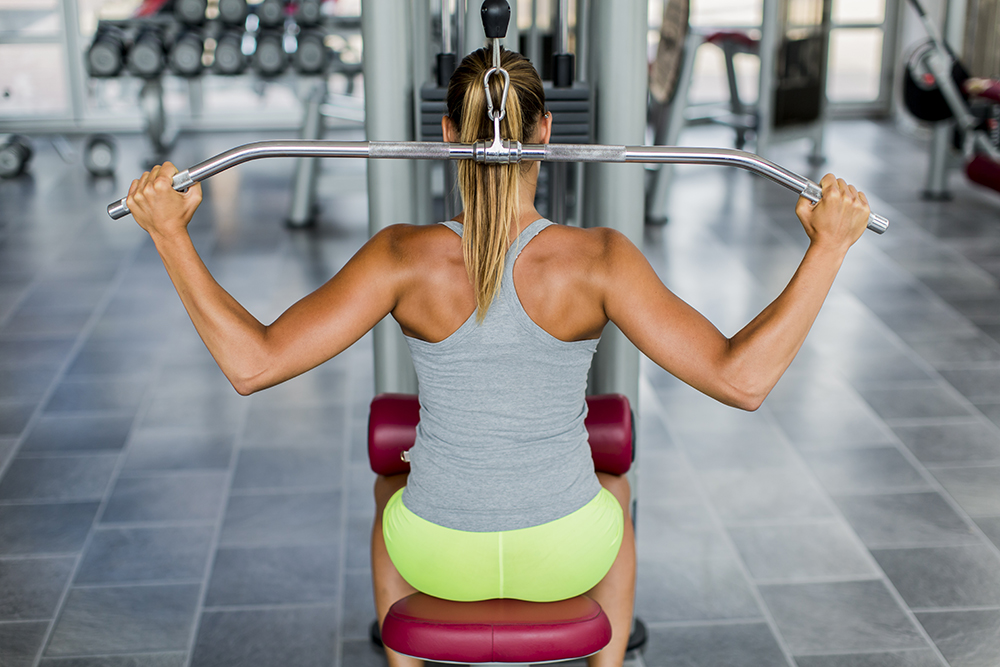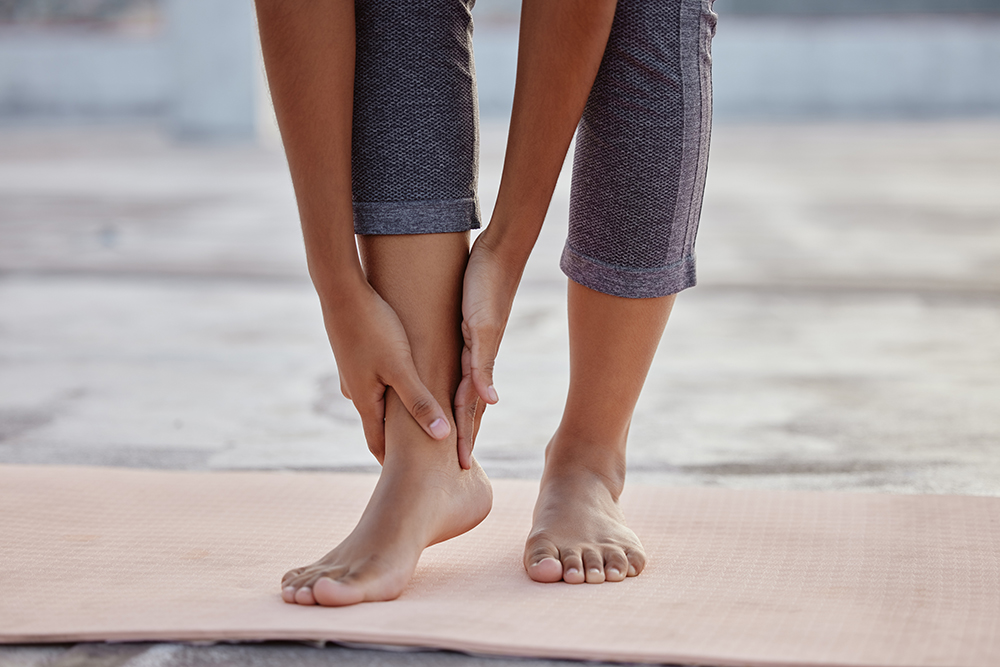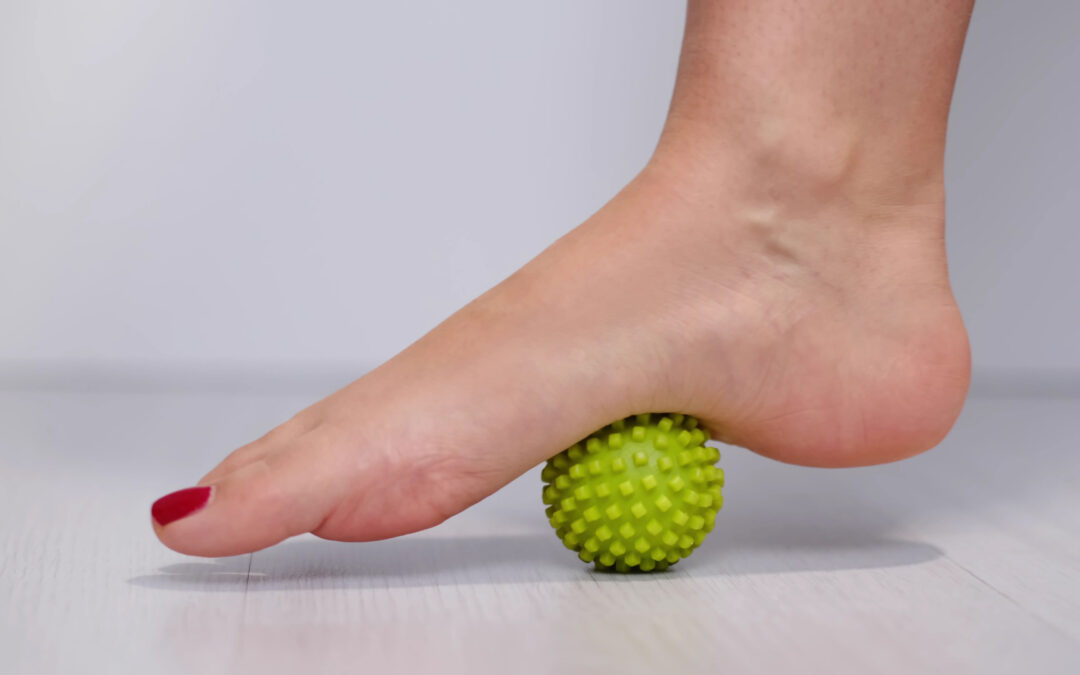Contents
Pregnancy causes many changes in your body over the course of nine months, including water retention. Swollen feet are a common side effect of being pregnant, especially in the third trimester. Swelling, also called edema, can occur in up to 80% of healthy pregnancies. During pregnancy, your bodily fluids increase to provide for both you and your baby, and thanks to gravity, that excess fluid often travels down to the feet and ankle area.
While mild swelling in the feet and ankles is normal during pregnancy, it can be uncomfortable. The good thing is, there are many ways you can try to reduce swelling in your ankles! Let’s look at how physical therapy can help you reduce foot swelling, plus tips you can try at home.
Physical therapy for swollen feet during pregnancy
One of the most effective methods for reducing swelling in the feet during pregnancy is movement. When you move, it allows your lymphatic system to work more effectively, which can help drain some of that excess fluid.
In the later stages of pregnancy, it can become more difficult to move on your own. Your physical therapist may use a hands-on method such as manual therapy to try to get that fluid moving for you and hopefully decrease swelling. This way, they can guide and assist your movements to help you move better. Some physical therapists have a Certification in Orthopedic Manual Physical Therapy (COMT). This is a postgraduate speciality program that focuses on manual therapy techniques. At Lattimore PT, we have 30 fully certified COMTs who can use specialized manual therapy techniques to help you address various issues.
Here are a few common manual therapy practices that may help with swollen feet:
- Joint mobilization — This form of manual therapy can help improve your range of motion and get you moving. Your physical therapist will use their hands to work your foot and ankle joints in slow, repetitive movements to help loosen up stiff joints and get your lymphatic system moving.
- Therapeutic stretching — This type of assisted stretching helps to deepen a stretch and really isolate the tight muscles in the body. Stretching can help improve range of motion, get that fluid in your feet and ankles moving in the right direction, and relieve other pain and stiffness in the feet and legs.
- Soft tissue manipulation — Soft tissue manipulation is a way to increase blood flow and stimulate healing in the soft tissue surrounding a tight or painful joint. Your physical therapist may use this to gently massage and manipulate the tissue surrounding your swollen feet. This can stimulate the lymphatic system and push that fluid out of your feet and back into the rest of your body.
These techniques are a gentle, noninvasive way to stimulate your lymphatic system and help you decrease swelling and get some range of motion back. Your physical therapist can work with you to determine which treatment methods will be the best for your condition and limitations.
At-home treatments for swollen feet during pregnancy
Physical therapy can do a lot to help you decrease swelling in your feet, but what can you do at home as well? There are additional ways to reduce foot swelling between physical therapy appointments. Here are a few easy things you can do at home to help you get some temporary relief.
- Put your feet up — Elevation is a great way to help drain your swollen feet. If you’ve been standing for a long period of time, gravity will naturally pull excess water down to your feet and ankles. By elevating your feet, you can encourage that fluid to work its way back into your body. Try propping your feet up on a footstool or lying down with your feet up on some pillows. Remember, gravity is doing the work here, so try to elevate your feet as much as possible.
- Stay hydrated — This may seem counterintuitive, but drinking water can actually help decrease fluid retention in your body! Staying hydrated helps to flush your body of excess sodium and other waste and toxins, which can contribute to fluid retention. Around 8 to 10 cups of water per day is recommended for most people, but talk to your obstetrician if you have questions or concerns.
- Wear compression socks — Compression socks can go a long way in helping you decrease swelling in your feet and ankles. For best results, put the compression socks on in the morning before your feet begin to swell. Make sure to buy compression socks that aren’t too tight. Measure your ankles and calves when they are least swollen to get an accurate measurement for sizing charts.
- Exercise regularly — Exercises like light walking, stretching, foot exercises and yoga are all great ways to stay active and keep your lymphatic system flushing toxins without overexerting yourself. Try to maintain a regular daily schedule of gentle exercise to keep your body moving and your lymphatic system operating at its best.
- Avoid standing for long periods — While light exercise can help with swelling, standing for too long can have the opposite effect. This is especially true if you’re standing still, because gravity will pull that excess fluid down to your feet and ankles. Make sure not to stay on your feet for too long, and prop them up after you’ve been standing a while to help the fluid drain.
While some of these recommendations may feel insignificant, all of these actions can reduce swelling in your feet and help you be more comfortable while pregnant. If you’re looking for physical therapy to help you deal with symptoms of pregnancy, contact our team at Lattimore Physical Therapy today for more information or to schedule an initial appointment.



